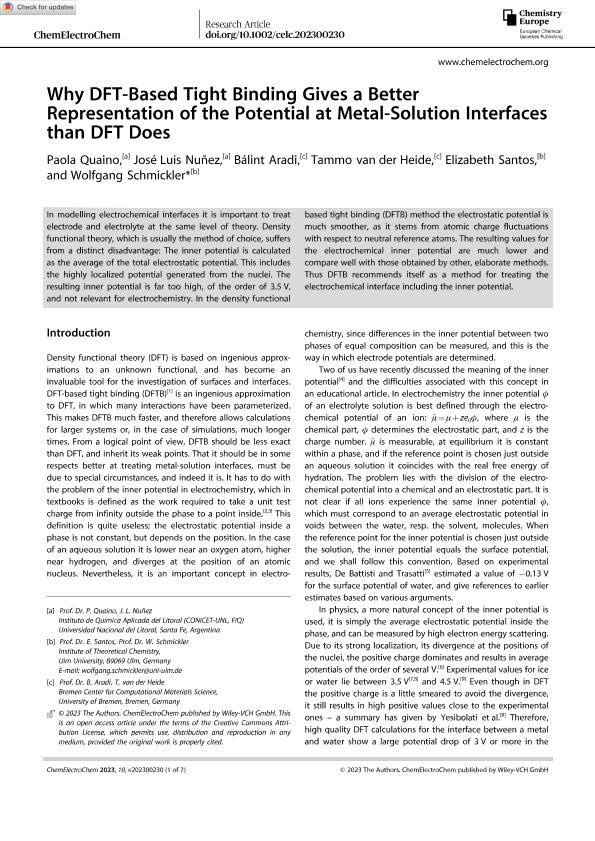Artículo
Why DFT-Based Tight Binding Gives a Better Representation of the Potential at Metal-Solution Interfaces than DFT Does
Quaino, Paola Monica ; Nuñez, José Luis
; Nuñez, José Luis ; Aradi, Bálint; van der Heide, Tammo; Santos, Elizabeth; Schmickler, Wolfgang
; Aradi, Bálint; van der Heide, Tammo; Santos, Elizabeth; Schmickler, Wolfgang
 ; Nuñez, José Luis
; Nuñez, José Luis ; Aradi, Bálint; van der Heide, Tammo; Santos, Elizabeth; Schmickler, Wolfgang
; Aradi, Bálint; van der Heide, Tammo; Santos, Elizabeth; Schmickler, Wolfgang
Fecha de publicación:
10/2023
Editorial:
John Wiley & Sons
Revista:
ChemElectroChem
ISSN:
2196-0216
Idioma:
Inglés
Tipo de recurso:
Artículo publicado
Clasificación temática:
Resumen
In modelling electrochemical interfaces it is important to treat electrode and electrolyte at the same level of theory. Density functional theory, which is usually the method of choice, suffers from a distinct disadvantage: The inner potential is calculated as the average of the total electrostatic potential. This includes the highly localized potential generated from the nuclei. The resulting inner potential is far too high, of the order of 3.5 V, and not relevant for electrochemistry. In the density functional based tight binding (DFTB) method the electrostatic potential is much smoother, as it stems from atomic charge fluctuations with respect to neutral reference atoms. The resulting values for the electrochemical inner potential are much lower and compare well with those obtained by other, elaborate methods. Thus DFTB recommends itself as a method for treating the electrochemical interface including the inner potential.
Palabras clave:
DFT
,
INNER POTENTIAL
,
POTENTIAL OF ZERO CHARGE
,
TIGHT BINDING
,
WORK FUNCTION
Archivos asociados
Licencia
Identificadores
Colecciones
Articulos(IQAL)
Articulos de INSTITUTO DE QUIMICA APLICADA DEL LITORAL
Articulos de INSTITUTO DE QUIMICA APLICADA DEL LITORAL
Citación
Quaino, Paola Monica; Nuñez, José Luis; Aradi, Bálint; van der Heide, Tammo; Santos, Elizabeth; et al.; Why DFT-Based Tight Binding Gives a Better Representation of the Potential at Metal-Solution Interfaces than DFT Does; John Wiley & Sons; ChemElectroChem; 10; 20; 10-2023; 1-7
Compartir
Altmétricas



